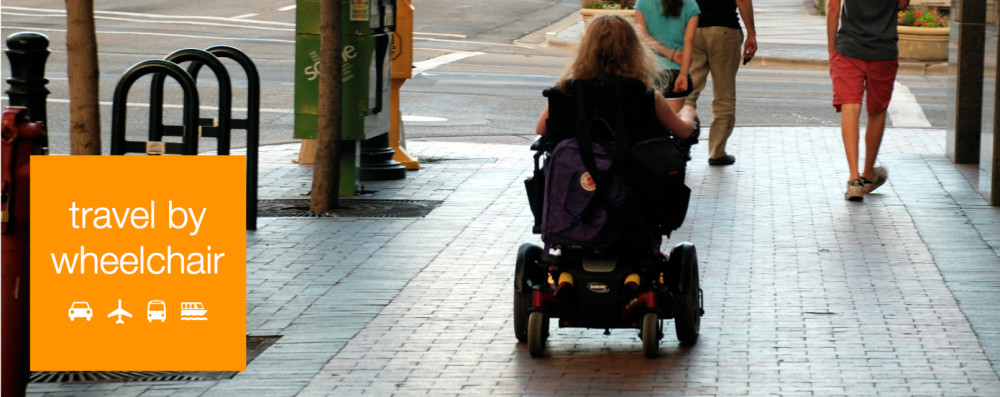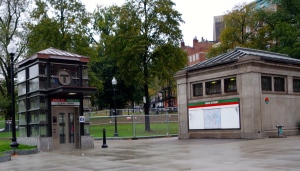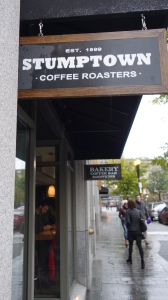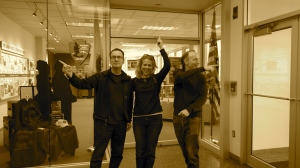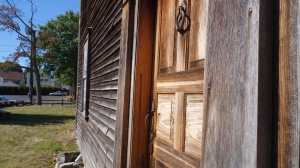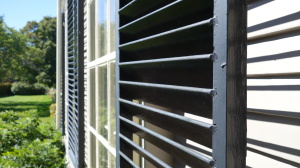A really old book bound in human skin AND a wheelchair-accessible venue near the Freedom Trail and the Boston Common in downtown Boston. What more could you want for a day’s outing?
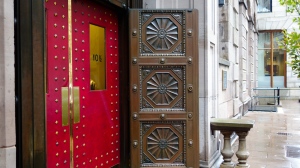 The Boston Athanaeum, 10 1/2 Beacon Street in Boston, was packed to the gills today, at the first open house they’ve had in years. Five-plus floors of books, art and reading and writing space comprise this National Historic Landmark building. The library, founded in 1807, is private, although anyone can join by paying an annual membership fee (individual or family, varies from $200 to $320). The Athanaeum is accessible by ramp from Beacon Street, and every floor available to members is accessible by elevator.
The Boston Athanaeum, 10 1/2 Beacon Street in Boston, was packed to the gills today, at the first open house they’ve had in years. Five-plus floors of books, art and reading and writing space comprise this National Historic Landmark building. The library, founded in 1807, is private, although anyone can join by paying an annual membership fee (individual or family, varies from $200 to $320). The Athanaeum is accessible by ramp from Beacon Street, and every floor available to members is accessible by elevator.
There are a couple of ADA-parking spaces around the corner on Park Street (outside the Paulist Center), although I imagine you are more likely to win the lottery than land one of these downtown parking spaces. The Park Street MBTA station is wheelchair-accessible, and the short walk or roll up Park Street and around the corner to the library is accessible. Beware, though, you’re in for a bumpy ride on these Beacon Street sidewalks: 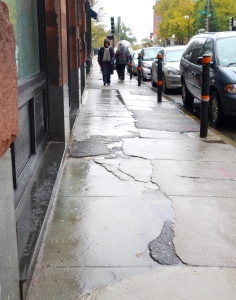
 The library offers regular guided tours on Tuesdays and Thursdays; reservations are required. You might see us tucked into a cozy nook called the Deborah Burnheimer Room….along with two, inviting red leather arm chairs, an enchanting view onto the Granary Burying Ground, and “Old Pat The Independent Beggar” gazing mournfully upon us from his gold-embossed frame on the wall.
The library offers regular guided tours on Tuesdays and Thursdays; reservations are required. You might see us tucked into a cozy nook called the Deborah Burnheimer Room….along with two, inviting red leather arm chairs, an enchanting view onto the Granary Burying Ground, and “Old Pat The Independent Beggar” gazing mournfully upon us from his gold-embossed frame on the wall.
Just don’t try to begin or end your day with a coffee from the Thinking Cup, serving Stumptown coffee, on Tremont Street. Technically the cafe is wheelchair accessible – you can roll in from the street entrance – but once inside you’re trapped in a narrow path that ends in a logjam for wheelchairs at the register and take-out counter. And yes, there’s a hip vibe, but the coffee is unreliable. I’ve had one great latte there and then today, one terrible one (that found its way into the trash at the Park Street T station). I am thinking that at their prices, every cup of coffee at the Thinking Cup should be a superb one AND that the owners need to re-think their accessible traffic flow.
